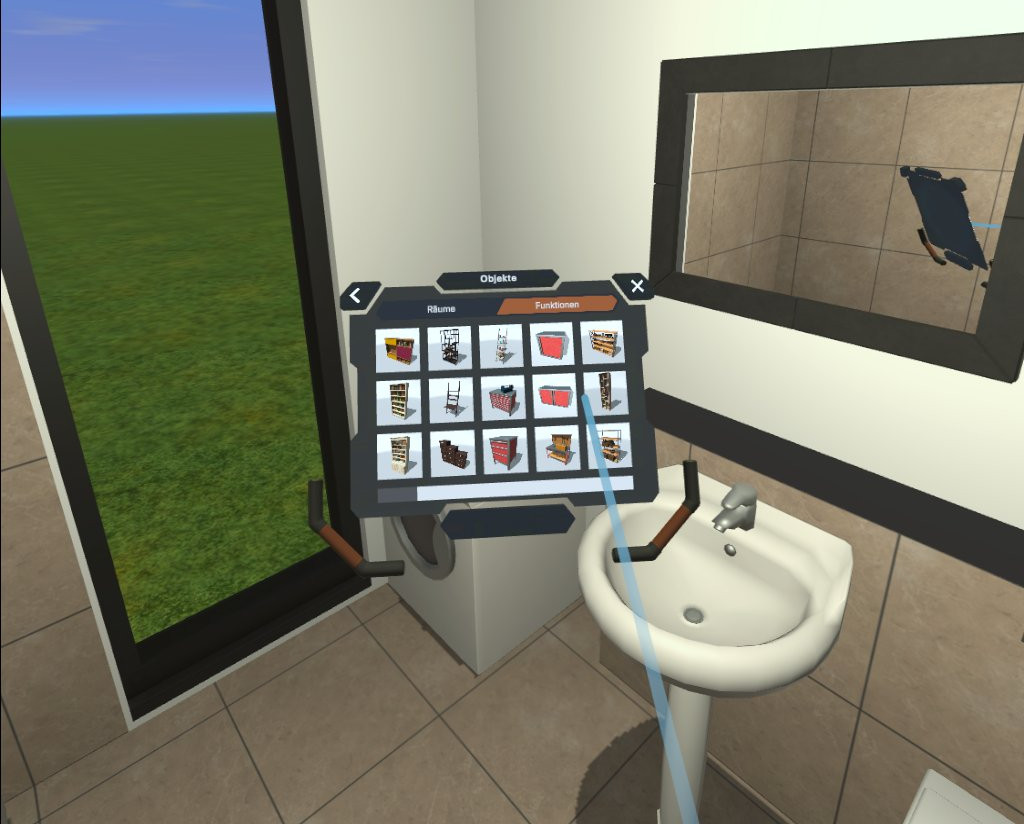The 2007 short film World Builder by Bruce Branit was my first contact with the concept of virtual reality and the possibilities it offers. The film shows a man building cityscape from scratch in a virtual environment, only using his hands as sculpting tools. I was part of the Blender community back then and the visual quality and tools were really impressive.
For an upcoming move I recently wanted to visualize floor plans of a flat, that is not yet build. While there is a lot of PC tools out there for room planning, I wanted to utilize my Quest 2 to actually stroll through the rooms. My aim was to answer questions like “where would like switches make sense” and “how big does this room feel, will our table fit”.
Arkio
The first tool I stumbled across in my search was Arkio, a semi-professional architecture tool. Arkio targets city-planners and was featured as a launch app for Meta Quest Pro. However, the tool also allows interior design and visiting. For my use case, I found Arkio rather complicated and limited in features. In-VR wall-placement was a mess that required countless hours of precise controller movements. Interior features, like wall colors, can be changed, but the entire process is not very user friendly. Only few furniture is included in the program and additional models must be imported as an OBJ file. While flexible, it was just to cumbersome for me to be enjoyable.
After this experience, I decided to procrastinate for a bit and hope for somebody else to solve my problem.
Home Design 3D VR
Unexpectedly, procrastinating my issue actually worked. In January 2023, Microids released Home Design 3D VR. It is based in Home Design 3D, a popular application by the same publisher. Similar to SweetHome 3D, Home Design 3D lets users build houses and flats, remodel, and furnish them. Home Design 3D VR may be used as standalone, but can also import existing homes from the desktop and application.

My first experience with the VR app was not ideal. While the menu and included demonstration homes are nice, it lacks in practically so far:
- Floor plans cannot be imported as an image
- Floor plans can only be build in increments of one meter
- There is no way to set a wall thickness
- Scaling windows and doors always changes all three dimensions, the aspect ratio is locked
- All rooms need to be grid-like, no angled walls
- No measurement indications
While moving around furniture with my bare hands was indeed a bit of “VR magic”, it was just no practical. Fortunately, the VR app can import homes from the Home Design 3D desktop application. While the floor plan of imported homes cannot be changed in VR, it respects the imported rooms. Home Design 3D is not the nicest Windows or macOS application ever designed, but it does its job. Fortunately, the desktop application can also import blueprint images, set wall thickness, and scale architectural elements in single dimensions.

I strongly recommend to only create walls, doors, and windows in the desktop application and to furnish the home in virtual reality. While many objects are marked as VR-compatible, the import of finished homes always lead to some losses for me. For example, I cannot get the standard white doors to import from desktop to VR - glass doors with the same dimensions work, though. White PVC windows can be imported, full-height black windows get lost in the process. A toilet imported fine, the fitting sink did not.
The VR app also has some issues with levels. While stairs are available, the outer shape of the building cannot have any indention. In such a case, locomotion in the entire building is broken. I recommend to model every level as a single home.
After dealing with these issues, Home Design 3D actually catches the magic of VR - even for less experienced users. It is intuitive to use, and includes a vast collection of textures and furniture. While there could always be more, you will usually find some object close enough to reality. There is definitely some “Sims house building” vibes to it. Especially the kitchen section is well equipped. It is just pretty cool to stand in a yet-to-be-build kitchen and discuss the placement of the sink and stove. Like every VR app, the image can be shared to a Chromecast for other people to participate. Home Design 3D also has a “virtual visit” mode, where multiple local users can work on a home together. I could not test this feature because I lack a second device and room for a second player. The mixed reality mode that does not really make sense on the Quest 2.

All in all, Home Design 3D VR is an app that shows the potential of VR for certain applications. It is already a lot of fun to play around with planned (or imagined) homes. I found it very helpful to get a feeling for room dimensions. With some bug fixing and additional features, it may get a real hot-tip for may Quest 2 and Quest Pro users.